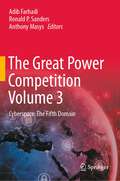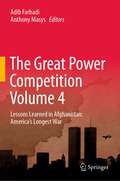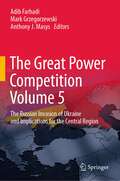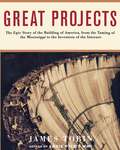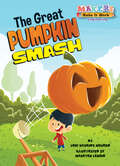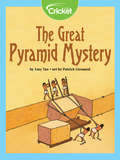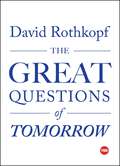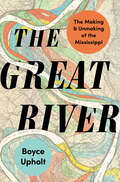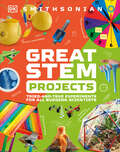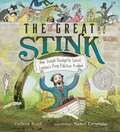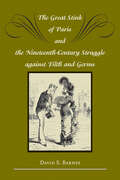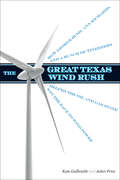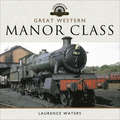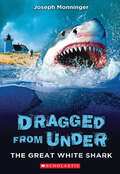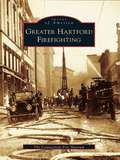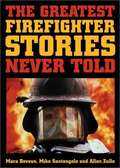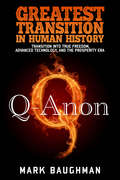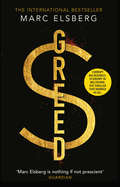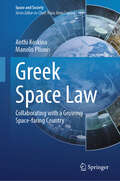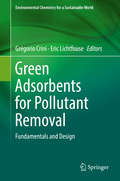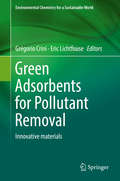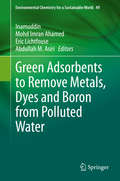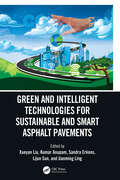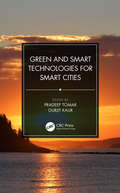- Table View
- List View
The Great Power Competition Volume 3: Cyberspace: The Fifth Domain
by Adib Farhadi Ronald P. Sanders Anthony MasysFor millennia, humans waged war on land and sea. The 20th century opened the skies and the stars, introducing air and space as warfare domains. Now, the 21st century has revealed perhaps the most insidious domain of all: cyberspace, the fifth domain. A realm free of physical boundaries, cyberspace lies at the intersection of technology and psychology, where one cannot see one’s enemy, and the most potent weapon is information.The third book in the Great Power Competition series, Cyberspace: The Fifth Domain, explores the emergence of cyberspace as a vector for espionage, sabotage, crime, and war. It examines how cyberspace rapidly evolved from a novelty to a weapon capable of influencing global economics and overthrowing regimes, wielded by nation-states and religious ideologies to stunning effect.Cyberspace: The Fifth Domain offers a candid look at the United States’ role in cyberspace, offering realistic prescriptions for responding to international cyber threats on the tactical, strategic, and doctrinal levels, answering the questions of how can we respond to these threats versus how should we respond? What are the obstacles to and consequences of strategic and tactical response options? What technological solutions are on the horizon? Should the U.S. adopt a more multi-domain offensive posture that eschews the dominant “cyber vs. cyber” paradigm? To answer these questions, experts examine the technological threats to critical infrastructure; cyber operations strategy, tactics, and doctrine; information influence operations; the weaponization of social media; and much more.
The Great Power Competition Volume 4: Lessons Learned in Afghanistan: America’s Longest War
by Adib Farhadi Anthony MasysLessons Learned from Afghanistan: America’s Longest War examines the lessons of how America’s “longest war” came to an ignominious end with staggering consequences for the United States and the Afghan nation. Afghanistan today faces an unprecedented humanitarian crisis, looming threat of a civil war and a resurgence of violent extremism organizations similar to pre-9/11. As the U.S. enters a new era in the strategic geopolitical Great Power Competition, an analysis of the original mission intent, shifting policy and strategic objectives, and ineffective implementation of security, political and economic programs reveal critical lessons and questions such as: What led to the “strategic failure” of the U.S. in Afghanistan? What decisions resulted in the present-day humanitarian, civil, and political crises in Afghanistan? Were these consequences in fact avoidable? Was there an alternative approach that could have maintained the hard-fought gains of the last two decades, and better demonstrated America's standing as a defender of global human rights? Lessons Learned from Afghanistan: America’s Longest War further explores lessons of the past negotiations between the United States, Taliban, and former U.S. backed Afghan government to suggest alternative pathways that honor the original intent of the mission and meet present-day obligations to an Afghan nation in crisis.
The Great Power Competition Volume 5: The Russian Invasion of Ukraine and Implications for the Central Region
by Adib Farhadi Mark Grzegorzewski Anthony J. MasysThe Russian Invasion of Ukraine and Implications for the Central Region addresses national security threats and strategic opportunities for the United States and its allies in the Middle East and Central Asia following Russia’s invasion of Ukraine. Recognizing that integrated deterrence is not constrained by geography or domain, this book focuses on the complex threats and challenges confronting U.S. national security and foreign policy in a post-Ukraine invasion environment. That is to say, what happens in Ukraine does not stay in Ukraine. It affects everyone from the region to the cyberspace domain to people on the other side of the world, due to changes in commodity prices.Specifically, this volume explores how revised analyses of Russia may alter U.S. and allied strategies in a shifting international system and within the framing of strategic competition. Experts in this volume examine how the war in Ukraine will influence Russian strategy and foreign policy in the Middle East, Central Asia, and globally; what effect the Ukraine invasion could have on global and regional geopolitics and geoeconomics; and the United States’ ability to protect national interests in the Central Region. The reasons for this are multiple and complex. In this volume, we explore many issues that have confounded security experts by asking questions such as: What happens after the Russian invasion? What lessons did the U.S., Ukraine, NATO, and the European Union learn about Russia? What lessons did Russia learn about itself and its military after the Ukraine invasion? What lessons did the U.S. learn in Afghanistan that apply to Ukraine? Why was the initial analysis of the Russian invasion so wrong? How has power shifted in the international system since the Ukraine invasion? How has the security environment shifted since the Ukraine invasion? For the U.S. to continue supporting its partners in the Middle East and Central Asia, it must anticipate what new opportunities will arise from Russia’s missteps in Ukraine. The Russian Invasion of Ukraine and Implications for the Central Region addresses these challenges and opportunities and informs policymakers on the changing contours of the Great Power Competition.
Great Projects: The Epic Story of the Building of America, from the Taming of the Mississippi to the Invention of the Internet
by James TobinSince the earliest days of the republic, great engineering projects have shaped American landscapes and expressed American dreams. The ambition to build lies as close to the nation's heart as the belief in liberty. We live in a built civilization, connected one to another in an enormous web of technology. Yet we have all too often overlooked the role of engineers and builders in American history. With glorious photographs and epic narrative sweep, Great Projects at last gives their story the prominence it deserves.Each of the eight projects featured in this masterful narrative was a milestone in its own right: the flood-control works of the lower Mississippi, Hoover Dam, Edison's lighting system, the spread of electricity across the nation, the great Croton Aqueduct, the bridges of New York City, Boston's revamped street system, known as the Big Dig, and the ever-evolving communica- tions network called the Internet. Each project arose from a heroic vision. Each encountered obstacles. Each reveals a tale of genius and perseverance.James Tobin, winner of a National Book Critics Circle Award, explains the four essential tasks of the engineer: to protect people from the destructive force of water while harnessing it for the enormous good it can do; to provide people with electricity, the motive force of modern life; to make great cities habitable and vital; and to create the pathways that connect place to place and person to person. Tobin focuses on the indi- viduals behind our greatest structures of earth and concrete and steel: James Buchanan Eads, who walked on the floor of the Mississippi to learn the river's secrets; Arthur Powell Davis and Frank Crowe, who imagined a dam that could transform the West; Thomas Edison, who envisioned a new way to light the world; Samuel Insull, the organizational mastermind of the electrical revolution; the long-forgotten John Bloomfield Jervis, who assured New York's future with the gift of clean water; Othmar Ammann, the modest Swiss-American who fought his mentor to become the first engineer to bridge the lower Hudson River; Fred Salvucci, the antihighway rebel who transformed the face of Boston; and J.C.R. Licklider, the obscure scientist who first imagined the Internet. Here, too, are the workers who scorned hardship to turn the engineers' dreams into reality, deep underground and high in the sky, through cold and heat and danger. In Great Projects -- soon to be a major PBS television series by the Emmy Award-winning Great Projects Film Company -- we share their dreams and witness their struggles; we watch them create the modern world we walk through each day -- the "city upon a hill" that became our America.
The Great Pumpkin Smash (Makers Make It Work)
by Lori Haskins HouranFor Luke, autumn in Florida feels weird. There are no changing leaves, no cider, and worst of all, no pumpkin chucking! But maybe he can engineer a way to bring pumpkin spice to the south. Tying into the popular Makers Movement, Makers Make It Work is a series of fun easy-to-read stories that focus on problem-solving and hands-on action. This charming story explores the Makers theme of Engineering and includes explanatory sidebars and a catapult activity for young makers to try themselves!
The Great Pyramid Mystery
by Amy TaoNo one knows for sure just how the ancient Egyptians built the Great Pyramid of Giza, which is taller than the Statue of Liberty. How could an ancient civilization have achieved this engineering feat? Perhaps the solution to this mystery can be answered with simple machines!
The Great Questions of Tomorrow: The Ideas That Will Remake The World (TED Books)
by David RothkopfA unique tour around the world in search of the great thinkers of our time and their next big ideas.We are on the cusp of a sweeping revolution—one that will change every facet of our lives. The changes ahead will challenge and alter fundamental concepts such as national identity, human rights, money, and markets. In this pivotal, complicated moment, what are the great questions we need to ask to navigate our way forward? David Rothkopf believes in the power of questions. When sweeping changes have occurred in history—the religious awakenings of the Reformation; the scientific advances of the Age of Exploration; the technological developments of the Renaissance, the Enlightenment, and the Industrial Revolution—they have brought with them, not just new knowledge, but provoked great questions about how we must live. With the world at the threshold of profound change, Rothkopf seeks the important questions of our time—ones that will remake the world and our understanding of it. From the foundational questions: "Why do we live within a society?" and "What is war?" to modern concerns such as "Is access to the internet a basic human right?" The Great Questions of Tomorrow confronts our approach to the future and forces us to reimagine fundamental aspects of our lives—identity, economics, technology, government, war, and peace.
The Great River: The Making and Unmaking of the Mississippi
by Boyce UpholtA sweeping history of the Mississippi River—and the centuries of human meddling that have transformed both it and America. The Mississippi River lies at the heart of America, an undeniable life force that is intertwined with the nation’s culture and history. Its watershed spans almost half the country, Mark Twain’s travels on the river inspired our first national literature, and jazz and blues were born in its floodplains and carried upstream. In this landmark work of natural history, Boyce Upholt tells the epic story of this wild and unruly river, and the centuries of efforts to control it. Over thousands of years, the Mississippi watershed was home to millions of Indigenous people who regarded “the great river” with awe and respect, adorning its banks with astonishing spiritual earthworks. The river was ever-changing, and Indigenous tribes embraced and even depended on its regular flooding. But the expanse of the watershed and the rich soils of its floodplain lured European settlers and American pioneers, who had a different vision: the river was a foe to conquer. Centuries of human attempts to own, contain, and rework the Mississippi River, from Thomas Jefferson’s expansionist land hunger through today’s era of environmental concern, have now transformed its landscape. Upholt reveals how an ambitious and sometimes contentious program of engineering—government-built levees, jetties, dikes, and dams—has not only damaged once-vibrant ecosystems but may not work much longer. Carrying readers along the river’s last remaining backchannels, he explores how scientists are now hoping to restore what has been lost. Rich and powerful, The Great River delivers a startling account of what happens when we try to fight against nature instead of acknowledging and embracing its power—a lesson that is all too relevant in our rapidly changing world.
Great STEM Projects
by DKExplore Science, Technology, Engineering, and Maths with this jam-packed collection of fun-filled experiments you can do at home.Get immersed in exciting STEM activities that will inspire every budding home scientist, technology fan, young engineer, and mathematician! Witness your very own erupting volcano blow sky high. Build a sturdy sandcastle and reveal the incredible technology of construction materials. Design a wind-up car and discover your inner engineer, and test your knowledge of maths by making a marble run. Great STEM Projects features an enormous collection of incredible, tried-and-tested STEM experiments.With over 50 exciting experiments, children aged 9+ will love getting involved in activities like making a wormery, constructing a spaghetti tower, mixing gels to make air fresheners, creating mathematically precise shadow puppets, and freezing icy orbs.This exciting book of experiments for children includes: 50 fun-packed, educational experiments to get kids inspired by the STEM fields: Science, Technology, Engineering, and Maths.A huge variety of activities using easily sourced materials, and ranging from quick and easy to more challenging, to suit different ages, interests and attention spans.Big, beautiful introductory shots for each experiment will engage and excite young readers.Easy-to-understand step-by-step instructions throughout, accompanied by clear, helpful photography.Great STEM Projects is a superb way for teachers and parents to help inspire and develop their kids&’ interest in STEM subjects. Featuring beautiful photography and engaging illustrations accompanied by &“How it works&” and &“Real world&” explanations, young readers can begin to understand the principles of STEM behind each and every step of an experiment.
The Great Stink How Joseph Bazalgette Solved London's Poop Pollution Problem: How Joseph Bazalgette Solved London's Poop Pollution Problem
by Colleen PaeffIt's the summer of 1858, and London's River Thames STINKS. What is creating this revolting smell? The answer is gross: the river is full of poop. But the smell isn't the worst problem. Every few years, cholera breaks out, and thousands of people die. Could there be a connection between the foul water and the deadly disease? One engineer dreams of making London a cleaner, healthier place. His name is Joseph Bazalgette. His grand plan to create a new sewer system to clean the river is an engineering marvel. And his sewers will save lives. Nothing stinky about that.
The Great Stink of Paris and the Nineteenth-Century Struggle against Filth and Germs
by David S. BarnesExplores the scientific and social factors that continue to influence the public's lingering uncertainty over how disease can—and cannot—be spread.Late in the summer of 1880, a wave of odors enveloped large portions of Paris. As the stench lingered, outraged residents feared that the foul air would breed an epidemic. Fifteen years later—when the City of Light was in the grips of another Great Stink—the public conversation about health and disease had changed dramatically. Parisians held their noses and protested, but this time few feared that the odors would spread disease. Historian David S. Barnes examines the birth of a new microbe-centered science of public health during the 1880s and 1890s, when the germ theory of disease burst into public consciousness. Tracing a series of developments in French science, medicine, politics, and culture, Barnes reveals how the science and practice of public health changed during the heyday of the Bacteriological Revolution.Despite its many innovations, however, the new science of germs did not entirely sweep away the older "sanitarian" view of public health. The longstanding conviction that disease could be traced to filthy people, places, and substances remained strong, even as it was translated into the language of bacteriology. Ultimately, the attitudes of physicians and the French public were shaped by political struggles between republicans and the clergy, by aggressive efforts to educate and "civilize" the peasantry, and by long-term shifts in the public's ability to tolerate the odor of bodily substances.
The Great Texas Wind Rush: How George Bush, Ann Richards, and a Bunch of Tinkerers Helped the Oil and Gas State Win the Race to Wind Power
by Kate Galbraith Asher PriceFrom two environmental journalists, &“the improbable story of how the oil and gas state became the nation&’s wind-power leader&” (The Texas Observer). In the late 1990s, West Texas was full of rundown towns and pumpjacks, aging reminders of the oil rush of an earlier era. Today, the towns are thriving as 300-foot-tall wind turbines tower above those pumpjacks. Wind energy has become Texas&’s latest boom. How did this dramatic transformation happen in a state that fights federal environmental policies at every turn? In The Great Texas Wind Rush, environmental reporters Kate Galbraith and Asher Price tell the compelling story of a group of unlikely dreamers and innovators, politicos and profiteers. The tale spans a generation and more, and it begins with the early wind pioneers, precocious idealists who saw opportunity after the 1970s oil crisis. Operating in an economy accustomed to exploiting natural resources and always looking for the next big thing, their ideas eventually led to surprising partnerships between entrepreneurs and environmentalists, as everyone from Enron executives to T. Boone Pickens, as well as Ann Richards, George W. Bush and Rick Perry, ended up backing the new technology. In this down-to-earth account, the authors explain the policies and science that propelled the &“windcatters&” to reap the great harvest of Texas wind. They also explore what the future holds for this relentless resource that is changing the face of Texas energy. &“Enjoyable to read. . . . I learned something on every page.&” —Michael Webber, Associate Director, Center for International Energy and Environmental Policy, University of Texas at Austin &“A thoughtful, valuable story for anyone who cares about renewable energy or climate change.&” ―The Associated Press
Great Western: Manor Class (Locomotive Portfolios)
by Laurence WatersThe 30 Manor class 4-6-0s were designed by CB Collett in 1938, and built by the Great Western, and the Western Region at Swindon in two batches, 20 in 1938/9, and 10 in 1950. In order to save money the first 20 members of the class were built using parts from withdrawn 4300 class 2-6-0s, and were coupled to refurbished Churchward 3,500 gallon tenders. The lighter 4-6-0s Manors were given blue route classification which allowed them to work over many secondary lines.The construction of the Manors completed the final stage of Colletts plan to provide a full range of 4-6-0 tender locomotives for Great Western passenger services.Over the years the Manors saw extensive use on services in the South West, West Wales and ex-Cambrian Lines in North Wales. They provided motive power for both the Pembroke Coast Express and the Cambrian Coast Express. Many of the class lasted to the end of steam traction on the Western Region, with the last examples being withdrawn in November 1965. Remarkably of the original 30 members of the class no fewer than 9 have survived.In this book, author Laurence Waters charts the history of the class from their construction at Swindon in 1938, right through to the final withdrawals in 1965. Using many previously unpublished black and white, and colour photographs, accompanied by informative captions, each member of the class is illustrated. This book should appeal to those interested in the history of Great Western Locomotive development as well as modellers of the Great Western and Western Region.
The Great White Shark (Dragged from Under #2)
by Joseph MonningerDANGER FROM THE DEPTHS!In beautiful Cape Cod, a fatal Great White attack rocks the popular tourist destination. As the beaches are closed and locals grow angry, a recently arrived Barn Whimbril heads straight into the action. But with a group of local teens determined to surf no matter what or who gets in the way, can Barn safely investigate the attack or will he come face-to-face with the ocean's most feared apex predator?
Greater Hartford Firefighting (Images of America)
by The Connecticut Fire MuseumThe Hartford area has a rich history of firefighting, beginning with the bucket brigades of early colonial history. As devastating blazes razed many key buildings and entire neighborhoods, these small teams developed into large volunteer groups. The city finally realized that paid fire departments were needed, and the modern firefighting world bloomed with technological advances in equipment and procedures. The evolution of these brave firefighting groups is richly chronicled in Greater Hartford Firefighting.
The Greatest Firefighter Stories Never Told
by Mike Santangelo Mara Bovsun Allan ZulloThe firefighters who lost their lives in the September 11 attack on the World Trade Center have become well-known-and rightfully so. But firefighters throughout America risk life and limb every day, many times without any acknowledgement whatsoever, let alone fame or fortune. In The Greatest Firefighter Stories Never Told, authors Mike Santangelo, Mara Bovsun and Allan Zullo have collected more than two dozen gripping accounts of America's bravest heroes, those who save lives every day as they rush in to rescue others. From airport firefighters to hazardous materials experts, from forest firefighters to high-elevation rescuers, from smoke jumpers to harbor firefighters, The Greatest Firefighter Stories Never Told captivates readers with its focus on the fresh and fascinating tales of real heroes and those they save. Several stories highlight some of the courageous firefighters of the New York Fire Department who were on hand during the terrorist attacks on the World Trade Center. Already, the department's heroism has captured America's heart. These gripping, in-depth stories will put names and faces to those most deserving of worldwide recognition.
The Greatest Transition In Human History: Transition into True Freedom, Advanced Technology, and The Prosperity Era
by Mark BaughmanKnowledge is power. Real truth is freedom. Freedom is what our Founding Fathers wanted to create as the beacon of light to the world in 1776. America was to be the example of what humanity could be. Was that really achieved? The Greatest Transition in Human History tells the real story of America over the past over 200 years - the heartbreak, false-flag wars, hidden technology, power, corruption, and manipulation. Does the American citizen have real Freedom as the great Constitution and Bill of Rights intended? The Greatest Transition in Human History is the real emotion story of great Americans and patriots standing up for these great rights. These freedoms were taken for granted by so many - for many fell asleep and did not participate as much as we should have, including myself for many years. No more, for I work for humanity, and freedom. I want that real Freedom Bell to ring for all. For in the oath to a military person sworn in to our armed forces, they are to fight any enemy both foreign and domestic. The Greatest Transition in Human History is the story of brave people standing up for individual freedoms and rights worldwide, in the Greatest Secret War ever.
Greed: The page-turning thriller that warned of financial melt-down
by Marc ElsbergCORRUPT BIG BUSINESS, ECONOMY IN MELTDOWN, THE THRILLER THAT WARNED US ALL'Marc Elsberg is nothing if not prescient' GUARDIANIt’s the near future: the world economy is in freefall. Mass unemployment and hunger rage as banks, corporations and countries go bankrupt. But one group are doing just fine: the super-rich.Nobel prize-winning economist Herbert Thompson drives to an emergency summit in Berlin, to deliver his ground-breaking solution to the world’s elite: a formula that will reverse the downturn, transform the economy, and give everyone a share of the wealth.Thompson never arrives. He is killed in a car crash on the way.Jan, a keen cyclist out late, sees the incident. Convinced Thompson has been murdered, he vows to find out why.But there are powerful forces at work, who will stop at nothing to keep Jan silent.How far will they go to satisfy their greed? And who can stop them?A spine-chillingly realistic thriller on the horrors of freewheeling capitalism and the threat of human greed.By the global bestselling author of Blackout and Code Zero_____________PRAISE FOR MARC ELSBERG‘Fast, tense, thrilling, timely. This will happen one day’ LEE CHILD‘Dazzling’ Times Book of the Month'Both gripping and visionary' rbb Kulturradio'Elsberg succeeds in combining complex storylines into one breathtaking tale of suspense' BILD'Part Dan Brown-style chase and part eco-thriller, this debut will get people talking' BOOKLIST US
Greek Space Law: Collaborating with a Growing Space-faring Country (Space and Society)
by Anthi Koskina Manolis PlionisThis book provides an overview of the Greek legislation applying to space activity under the responsibility of the Greek State, as in line with international space law. Greece is not an established space-faring country; however, it is showing particular dynamism, making the most of its participation in international and EU space endeavors. Indeed, along with outstanding achievements in space science Greece took legislative action both at the international and national levels (proposals at the UNCOPUOS; Greek space law; signing of the Artemis Accords). Hence, the time has come to refer to – and present aspects of – the Greek space legislation. After an introductory section, the book provides information first on the national laws providing for the Greek participation in international space systems and in EU activities, which could be regarded as being the initial steps of Greece in the context of space. Thereafter, the rules applying to Greek space activity per se are presented, focusing on the authorities competent to decide on space matters, then on the substantial law rules allowing for – and clarifying – the application of international space law to domestic space operations. This book presents an overall view and analysis of the Greek space legislation, adding valuable information to the existing bibliography. Included as an appendix is a scholarly translation of the 2017 Greek space law.
The Greeks and the New
by Armand D'AngourThe Greeks have long been regarded as innovators across a wide range of fields in literature, culture, philosophy, politics and science. However, little attention has been paid to how they thought and felt about novelty and innovation itself, and to relating this to the forces of traditionalism and conservatism which were also present across all the various societies within ancient Greece. What inspired the Greeks to embark on their unique and enduring innovations? How did they think and feel about the new? This book represents the first serious attempt to address these issues, and deals with the phenomenon across all periods and areas of classical Greek history and thought. Each chapter concentrates on a different area of culture or thought, while the book as a whole argues that much of the impulse towards innovation came from the life of the polis which provided its setting.
Green Adsorbents for Pollutant Removal: Fundamentals and Design (Environmental Chemistry for a Sustainable World #18)
by Grégorio Crini Eric LichtfouseThis is the first volume on adsorption using green adsorbents and is written by international contributors who are the leading experts in the adsorption field. The first volume provides an overview of fundamentals and design of adsorption processes. For people who are new to the field, the book starts by two overview chapters presenting the principles and properties of wastewater treatment and adsorption processes. The book also provides a comprehensive source of knowledge on acid-base properties of biosorbents. It discusses fractal-like kinetic models for fluid-solid adsorption, reports on the chemical characterization of oxidized activated carbons for metal removal, and the use of magnetic biosorbents in water treatment. Furthermore, the thermodynamic properties of metals adsorption by green adsorbents, and biosorption of polycyclic aromatic hydrocarbons and organic pollutants are reviewed, and finally the recent trends and impact of nanomaterials as green adsorbent and potential catalysts for environmental applications are summarized. The audience for this book includes students, environmentalists, engineers, water scientists, civil and industrial personnel who wish to specialize in adsorption technology. Academically, this book will be of use to students in chemical and environmental engineering who wish to learn about adsorption and its fundamentals. It has also been compiled for practicing engineers who wish to know about recent developments on adsorbent materials in order to promote further research toward improving and developing newer adsorbents and processes for the efficient removal of pollutants from industrial effluents. It is hoped that the book will serve as a readable and useful presentation not only for undergraduate and postgraduate students but also for the water scientists and engineers and as a convenient reference handbook in the form of numerous recent examples and appended information.
Green Adsorbents for Pollutant Removal: Innovative materials (Environmental Chemistry for a Sustainable World #19)
by Grégorio Crini Eric LichtfouseThis is the second volume on adsorption using green adsorbents and is written by international contributors who are the leading experts in the adsorption field. Together with the first volume they show a typical selection of green materials used in wastewater treatment, with emphasis on industrial effluents. This second volume focuses on innovative materials. It presents hemp-based materials for metal removal, and the use of leaves for metal removal. It describes the biosorption of metals and metalloids on various materials and discusses the recent advances in cellulose-based adsorbents used in environmental purposes. Furthermore, activated carbons from food wastes, aerogels and bones, and municipal solid waste biochar as efficient materials for pollutant removal, respectively are reviewed as well as biosorption of dyes onto microbial biosorbents and the use of mushroom biomass to remove pollutants are looked at. The volume also includes detailed review of green adsorbents for removal of antibiotics, pesticides and endocrine disruptors and the use of pillared interlayered clays as innovative materials for pollutant removal. Finally, the use of green adsorbents for radioactive pollutant removal from natural water is discussed. The audience for this book includes students, environmentalists, engineers, water scientists, civil and industrial personnel who wish to specialize in adsorption technology. Academically, this book will be of use to students in chemical and environmental engineering who wish to learn about adsorption and its fundamentals. It has also been compiled for practicing engineers who wish to know about recent developments on adsorbent materials in order to promote further research toward improving and developing newer adsorbents and processes for the efficient removal of pollutants from industrial effluents. It is hoped that the book will serve as a readable and useful presentation not only for undergraduate and postgraduate students but also for the water scientists and engineers and as a convenient reference handbook in the form of numerous recent examples and appended information.
Green Adsorbents to Remove Metals, Dyes and Boron from Polluted Water (Environmental Chemistry for a Sustainable World #49)
by Inamuddin Mohd Imran Ahamed Eric Lichtfouse Abdullah M. AsiriThis book reviews adsorption techniques to clean wastewater, with focus on pollution by dyes and heavy metals. Advanced adsorbents include carbon nanomaterials, biomass, cellulose, polymers, clay, composites and chelating materials.
Green and Intelligent Technologies for Sustainable and Smart Asphalt Pavements: Proceedings of the 5th International Symposium on Frontiers of Road and Airport Engineering, 12-14 July, 2021, Delft, Netherlands (IFRAE)
by Xueyan LiuGreen and Intelligent Technologies for Sustainable and Smart Asphalt Pavements contains 124 papers from 14 different countries which were presented at the 5th International Symposium on Frontiers of Road and Airport Engineering (IFRAE 2021, Delft, the Netherlands, 12-14 July 2021). The contributions focus on research in the areas of "Circular, Sustainable and Smart Airport and Highway Pavement" and collects the state-of-the-art and state-of-practice areas of long-life and circular materials for sustainable, cost-effective smart airport and highway pavement design and construction. The main areas covered by the book include: • Green and sustainable pavement materials • Recycling technology • Warm & cold mix asphalt materials • Functional pavement design • Self-healing pavement materials • Eco-efficiency pavement materials • Pavement preservation, maintenance and rehabilitation • Smart pavement materials and structures • Safety technology for smart roads • Pavement monitoring and big data analysis • Role of transportation engineering in future pavements Green and Intelligent Technologies for Sustainable and Smart Asphalt Pavements aims at researchers, practitioners, and administrators interested in new materials and innovative technologies for achieving sustainable and renewable pavement materials and design methods, and for those involved or working in the broader field of pavement engineering.
Green and Smart Technologies for Smart Cities
by Pradeep Tomar Gurjit KaurThe book starts with an overview of the role of cities in climate change and environmental pollution worldwide, followed by the concept description of smart cities and their expected features, focusing on green technology innovation. This book explores the energy management strategies required to minimize the need for huge investments in high-capacity transmission lines from distant power plants. A new range of renewable energy technologies modified for installation in cities like small wind turbines, micro-CHP and heat pumps are described. The overall objective of this book is to explore all the green and smart technologies for designing green smart cities.
